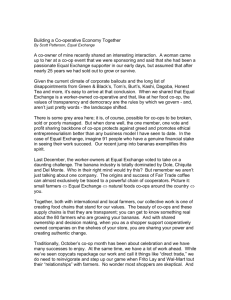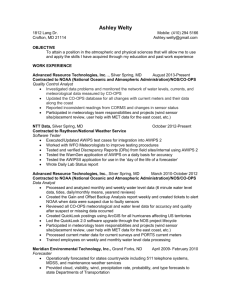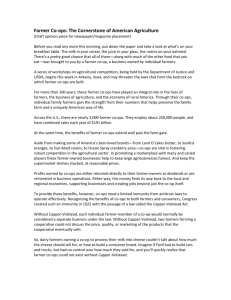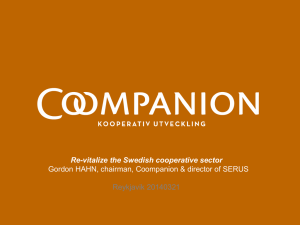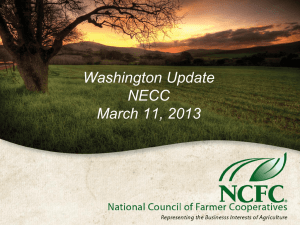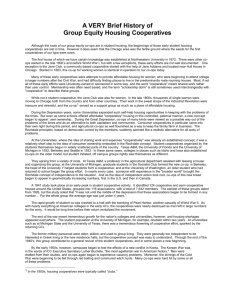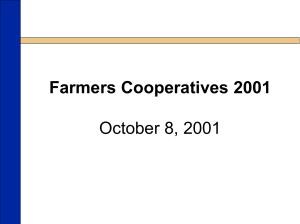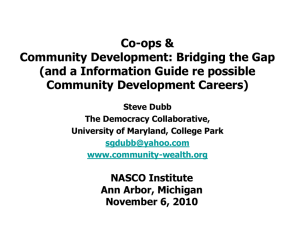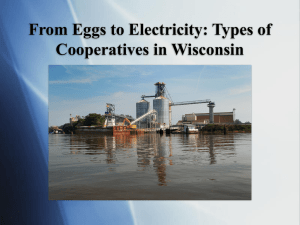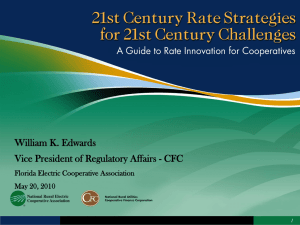Social Economy in Turkey
advertisement
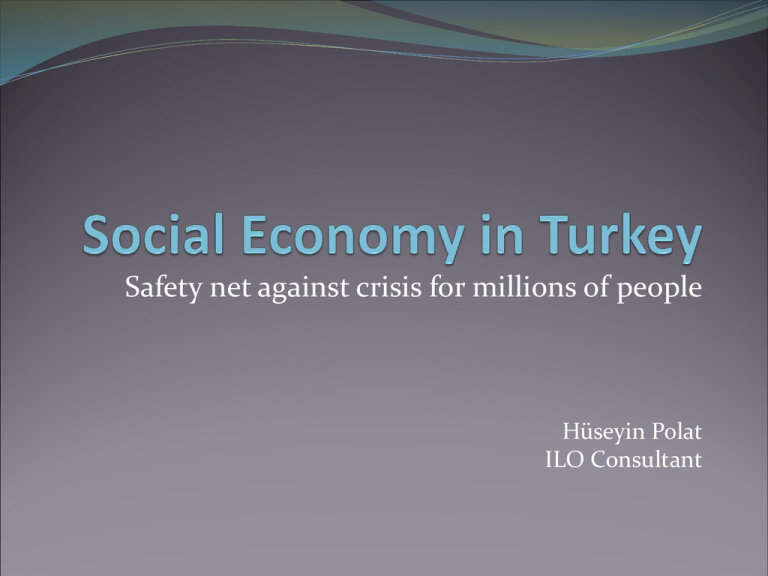
Safety net against crisis for millions of people Hüseyin Polat ILO Consultant Social Economy: The Third Sector Common characteristics: Primary purpose is not to obtain a return on capital Contribute to a more efficient market competition Work on principles of solidarity and mutuality Managed by the members (one member-one vote) Flexible and innovative Based on active membership SE categories in Turkey Cooperatives Foundations Associations and Mutual Assistance Funds Trade unions’ socio-economic establishments Scope of Social Economy 17 million direct beneficiaries (with families, serves more than half of Turkey’s population) Creates more than 500,000 jobs (directly) Owns and runs 34 universities Primary source of funding for agriculture, SMEs, health care for disabled, child care and for primary education of girls in rural areas, etc. Largest in volume of purchase and sale/export of main agricultural products and distribution of agric inputs Co-ops in Nobel Economy Prize Nobel Prize in Economics to Elinor Ostrom “for her analysis of economic governance, especially the commons” that includes a case from Alanya Balıkçılar Kooperatifi Başkanı Mustafa Çakır, Elinor Ostrom'a Nobel kazandıran çalışmada, Alanyalı fishery co-op in Alanya, Turkey Co-ops as main pillars of SE • • • • Agricultural Credit Cooperatives (ACCs) 2nd largest agric. credit distributor (19 %) Largest fertilizer, seed.. distributor 1,3 million farmermembers and 5600 staff 2008 volume of business exceeds 2,5 billion USD Co-ops as main pillars of SE Agricultural Sales Cooperatives (ASCs) More than 600,000 members 322 primary co-ops 17 product-based unions 100 % market share in many agricultural products and export marketing Co-ops as main pillars of SE Sugar Beet Producers’ Co-ops • 1,6 million members • Own 7 sugar factories • 42 % of sugar produc. • 1,6 Billion USD volume of business Artisanal Guarantee and Credit Co-ops o 670,000 members o Largest credit facility for small scale artisans & SMEs o 2,5 billion USD loan distributed in 2008 Foundations 4,500 foundations (1,906 Social Investment : Promoting Strategic and Effective Giving of them, 42 %, for social assistance, and 1,105 of them for education) 34 universities owned by the foundations The largest bank is owned by a foundation Several hundred thousand jobs created... Associations 80,750 associations and mutual assistance funds 8,6 million members 250,000 jobs created 13,000 Mutual Assistance Funds mainly formed by workers and civil servants to access credit work similar to SACCOs Trade Unions in SE Promotion of and support to consumer and housing co-ops Support to mutual assistance funds of workers Establish and run social service units for members and community The impact of financial crisis
